The pontoon-bridge economy of Europe is in order. Europeans are ready for the arrival of Russian
According to CNIM, this meets the needs of many northern European countries, which typically deploy their bridges on trucks of this type without using trailers. From an expeditionary point of view, to deploy an 3 meter F21XP ferry, you need an 4 truck - three for modules and one for ramps. For the transfer of heavier loads, CNIM has developed additional rigid floats that improve buoyancy, as a result of which the bridge is able to withstand the load of MLC100 (G) and MLC120 (K). Floats are transported in a separate truck and are installed under the floating modules before launching. This configuration is known as F3MAX. Shorter floating elements for installation with the F3XP bridge are also being developed, resulting in a load-bearing capacity of the MAX version. The last, but no less important version of the PFM F3D, for which the letter “D” means “drone”. His modules are equipped with a navigation system and an automatic section linkage system, which allows you to assemble a bridge without people on board. Both options F3MAX and F3D use a long ramp, more likely for bridges, not ferries. In terms of compatibility, F3 modules can be equipped with locking systems compatible with the Improved Ribbon Bridge.
CNIM began developing the F3 and F3XP systems in January of the 2019 year, while the prototype is scheduled for mid-2020, possibly at the opening of the Eurosatory exhibition. F3MAX elements will appear six months later. The development of F3D will begin when all other developments are completed; nevertheless, modules for it are already being designed, since the integration of relative positioning systems and automatic coupling has begun.
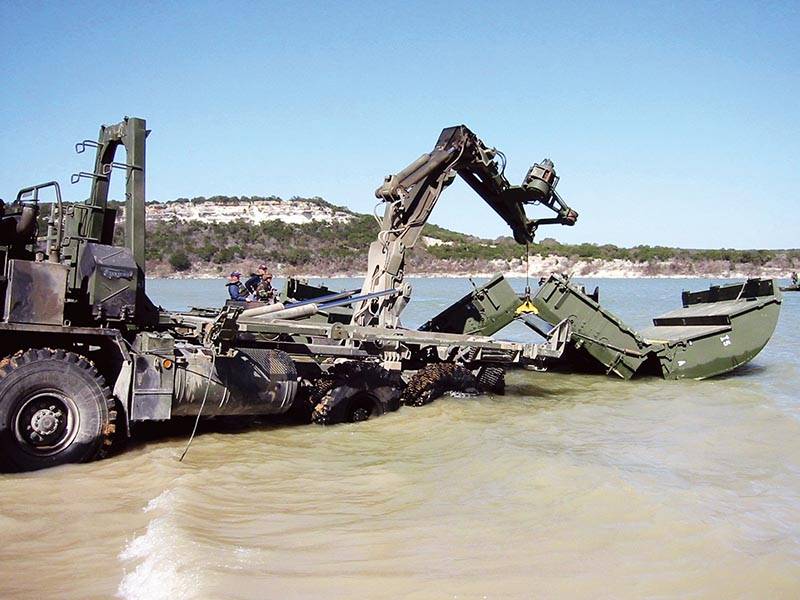
As for the floating modules, the most popular is undoubtedly the improved pontoon tape bridge IRD (Improved Ribbon Bridge) of the company GDELS, which is operated in the armies of the USA, Germany, Australia and Sweden and, more recently, also Iraq and Brazil. The main element of the IRB is the internal span of 6,71 meters long and 3,3 meters wide in transport position and 8,63 meters when unfolded. Sections are launched in the folded state and laid out on the water. In the bridge configuration, they withstand the load of MLC80 (T) and MLC96 (K) on a single-lane roadway with a width of 4,5 meters; two-way traffic is allowed with the width of the roadway 6,75 meters, but the load is limited by MLC20 (T) and MLC14 (K). Gangway spans are attached to the end parts of the bridge; at the same time, for each 2-3 flight, as a rule, a towing boat is required, which allows operations at flow speeds up to 3,05 m / s; 13 internal and two ramp spans allow an average of 30 meters to be built in 45-100 minutes. Three internal spans and two ramp spans are necessary for the construction of a ferry with a loading capacity MLС80 (Г) / 96 (К), which can be ready in 15 minutes. The IRB bridge is compatible with the aforementioned MZ pontoon bridge system, as well as the standard Ribbon Bridge and the folding Ribbon BridgeFoldable Float Bridge 70-x, capable of accepting the MLC60 load. During the Anaconda 2016 exercises already mentioned, engineering units of the American and German armies using IRB bridges and Dutch engineers using SRB built a record length of 350 meters.
The Bundeswehr’s end of operation for the IRB and M3 bridges ends at the same time, therefore, the replacement of these systems should begin soon. Apparently, Germany wants to acquire a system that combines the characteristics of M3 and IRB bridges, and this is a serious task for GDELS designers.
The company emphasizes that its MLC classification is based on the STANAG 2021 standard and that upgraded Tanks, for example, M1, Challenger 2 or Leopard 2, can be loaded and transported by its bridge systems of class MLC 120 (G) and more.
Four years ago, the French company CEFA studied the trends in bridge building and decided to develop a new bridge, very similar to the Russian pontoon-bridge machine "Volna" or the German bridge IRB. As a result, at the beginning of 2019, a prototype of the Steel Ribbon Bridge (SRB) was made. The keyword “steel” refers to the interior sections, while on the IRB bridge these sections are made of aluminum. The French SRB pontoon-bridge system is of course stronger (but also heavier) and copes with the loads MLC85 (G) and MLC120 (K). The dimensions of its internal spans are very close to the dimensions of the spans of the IRB bridge, although the mass is larger, 7950 kg versus 6350 kg. Another key feature is that the guidance system is mounted on a pallet, and not directly on the truck, this allows you to quickly install the system on any heavy truck equipped with an automatic PLS loading system with 10 tonne capacity. The closure system allows the SRBs to be used in conjunction with IRBs, which ensures interoperability. Retention in a certain position here is also provided by towboats. CEFA offers its Vedette F2 boat, whose two water jets provide a total thrust of 26 kN, but the SRB bridge can work with any boat that provides sufficient thrust. Vedette F2 is equipped with a Cummins air-cooled diesel engine for ease of maintenance. The number of spans and the time of setting up ferries and bridges is almost the same as that of the IRB bridge. The SRB system has already been tested in the French army. CEFA will finalize a new bridge for serial production planned for 2020.
Assault bridges
Originally manufactured by Fairey Engineering Ltd (now WFEL), a British company, the Medium Girder Bridge (MGB) is arguably one of the most widely used bridge systems in the West. More than 500 MGB systems have been sold to 40 countries, WFEL currently supplies MGB systems to African countries. The heaviest elements of the bridge, from the very beginning designed for manual assembly, can carry six soldiers. It is available in five different configurations: Single Span, Multi-Span, Double Storey with Link Reinforcement Set (LRS), Floating, and Mechanically Aided Constructed by Hand. A soldier for the construction of the latter option requires half as much. If in general terms, then in this case, as a rule, a roll bar is used to reach the opposite shore, and an avantbek (an element that extends the span for longitudinal sliding of the bridge) is attached to the front of the span. The typical time for building a single-tier bridge with a length of 9,8 meters with a load capacity of MLC70 in the daytime is 12 minutes, at night it triples; The bridgebuilding team should consist of 8 soldiers and one sergeant. To build a bridge with two tiers of the MLC70 class, 31 meters in length, three times as many people are needed and 40 minutes in the daytime and 70 minutes at night. In the floating version, pontoons made of aluminum alloy for shipbuilding purposes are used. A single-tier floating MGB is built in a continuous scheme, allowing one bridge span to be added every 30 seconds, while a two-tier floating MGB that can cope with an extreme shore height of up to 5 meters can be built in a multi-span or continuous scheme depending on the width of the barrier.
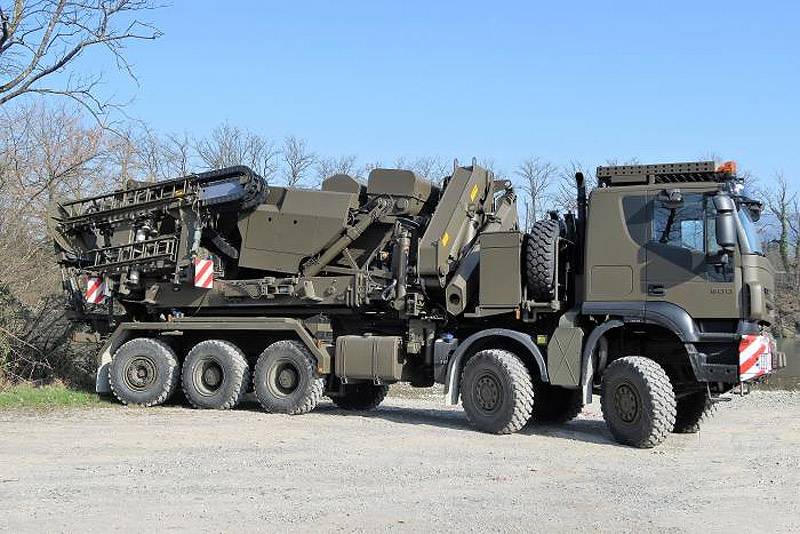
Considering the needs of the expeditionary forces, WFEL has developed the APFB (Air Portable Ferry Bridge) airborne ferry bridge - a lightweight, collapsible solution that can provide bridges or ferries with MLC35 wheeled and tracked capacity. The system can easily be transported by land, air or sea, using its own folding trailers, pallets or ISO containers. It can be deployed by the C130 military transport aircraft, on a helicopter suspension, or even dropped on special platforms. The complete APFB system consists of six standard and two special pontoons; a reduced number of pontoons (at least three) is necessary for specific tasks. A bridge with a span of 14,5 meters and a width of 4 meters, 12 engineers and one sergeant are able to build in 50 minutes. The construction of a reinforced version of the APFB with an increased span of the 29,2 meter requires twice as many engineers and two hours of time. As for the configuration of the ferry, it includes six pontoons, two of which are with an engine; for its construction, 14 soldiers, two sergeants and two hours of time are required.
However, the latest system offered by WFEL is the DSB (Dry Support Bridge), which is deployed using a bridge-laying machine mounted on various military-standard chassis, usually a heavy truck; the US Army uses Oshkosh M1075 10x10 for this purpose, the Swiss Army Iveco Trakker 10x8 and Australia RMMV XX NUMXx10. The installation system installed on the truck pushes the beam forward, which is thrown to the opposite bank, the bridge modules are fed forward on the beam suspension until the bridge reaches the opposite bank, then the beam is disassembled. The maximum span of this MLC10 class bridge is 120 meters, the width of the roadway is 46 meters, for the construction of the bridge you need 4,3 soldiers and less than 8 minutes. The DSB system has already been acquired by the USA, Turkey, Switzerland and Australia, the latter recently bought both DSB and MGB systems for their Land 90 project. In accordance with TDTC 155 standards, a DSB bridge with a length of 1996 meters was tested with loads of MLC46 (K) and 120 (G); its testing is ongoing in accordance with the STANAG 80 standard with the goal of defining a higher grade of MLC.
BAE Systems has been active in the field of military bridge building for many years, producing the Modular Bridging System (MBS). In July 2019, Rheinmetall and BAE Systems created a joint venture RBSL (Rheinmetall BAE Systems Land) to design military vehicles, including bridge systems. In 1993, the British army ordered the MBS system in two versions: Close Support Bridge (CSB), deployed from the Tank Bridge Transporter tractor unit, and General Support Bridge (GSB); these systems have many common elements.
The GSB system includes panels of 2, 4 and 8 meters length, ramps of 8 meters and auxiliary components, the system allows you to assemble bridges of various configurations. The complex includes two types of vehicles, a BV (Bridging Vehicle) transporter and ABLE (Automotive Bridge Launching Equipment), both of which are available in armored and unarmored versions. ABLE is used to bridge. First, the rail guide is pushed to the opposite side of the obstacle, then the assembled sections of the bridge are attached with the help of wheeled trolleys to the guide and move forward until the bridge reaches the opposite bank, then the guide is removed. Interestingly, the opposite shore can be three meters above or below the shore from which the bridge is built. The ABLE car parks back to the obstacle, while BV cars can park either side by side or in turn, the second solution allows you to work on limited sites. The Single Span Unreinforced GSB can span an obstacle 16 or 32 wide, one ABLE and two BVs are building. To increase the length, the Single Span Reinforced configuration is available, which allows you to build bridges with the length of 34, 44 and 56 meters; for this, four, four and five BV vehicles carrying the necessary elements are involved. If there is a suitable supporting surface at the bottom of the obstacle, a two-span bridge Two Span Fixed Pier with a rigid support can be built. An un reinforced configuration allows you to build bridges with a length of 30 or 64 meters, the same lengths are provided when using a floating support. All of these configurations require one ABLE machine and five BV machines for transporting bridge structures. A minimum of 10 people is required, and for the construction of a two-span bridge with a floating support, a maximum of 15 people. RBSL guarantees that its GSB system can withstand 10000 crossings under load MLC70 (G) or 6000 crossings under load MLC90 (G). The company has integrated a usage monitoring system into the main elements, which transfers data wirelessly to a computer, which allows monitoring the fatigue stresses of the bridge components.
The company is also developing a new bridge that can meet the requirements of the British Army Tight Project. This RBSL solution uses existing guidance systems for the CSB and GSB bridges; all new bridges are designed and tested as part of the evaluation phase of the Tugo Project. This new MBS bridge meets the British Department of Defense's MLC100 (G) load rating requirements. The bridge panels were tested in all respects at a special RBSL test site in Telford. The requirements of the Ministry of Defense for wheeled vehicles are still being determined.
RBSL is also working to enhance the capabilities of the MBS system, striving to achieve 100 meters in multi-span configurations. To this end, RBSL proactively analyzed the concept of the General Support Bridge with a span of 100 meters. Panels are also being developed from which a bridge with a length of 65 meters of class MLC30 (G) with guidance mechanisms made of carbon fiber can be built. RBSL also continues to work on longer span bridges and their guidance systems, although this is not part of the Tug Project requirements.
In 2010, Turkey bought two MBS systems from BAE Systems, and would like to acquire five more such systems. The Turkish company FNSS will act here as the parent company, and the British RBSL will supply the elements of the bridges.
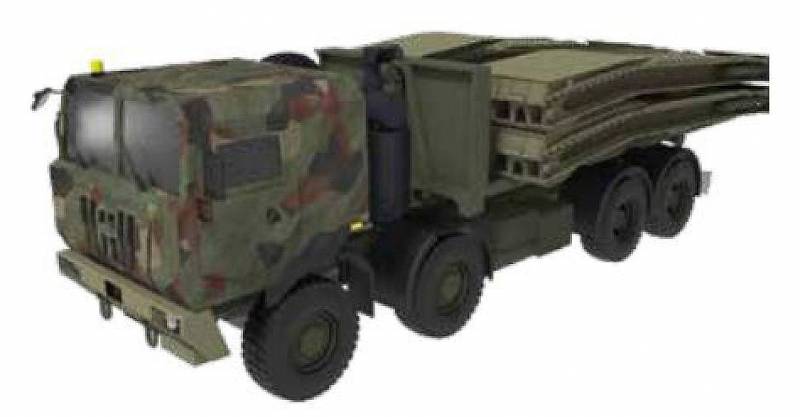
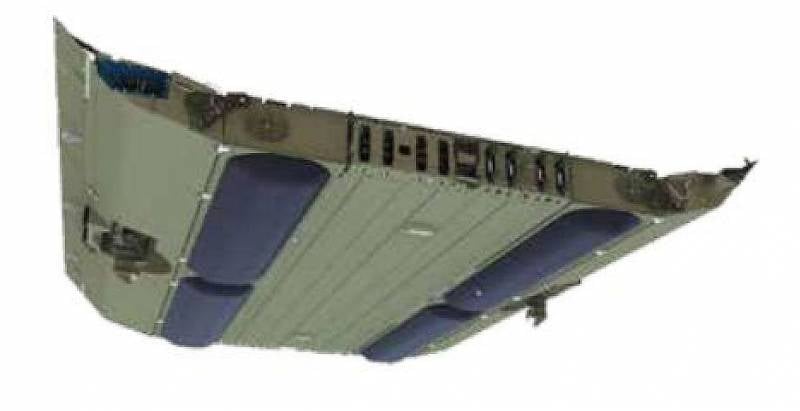
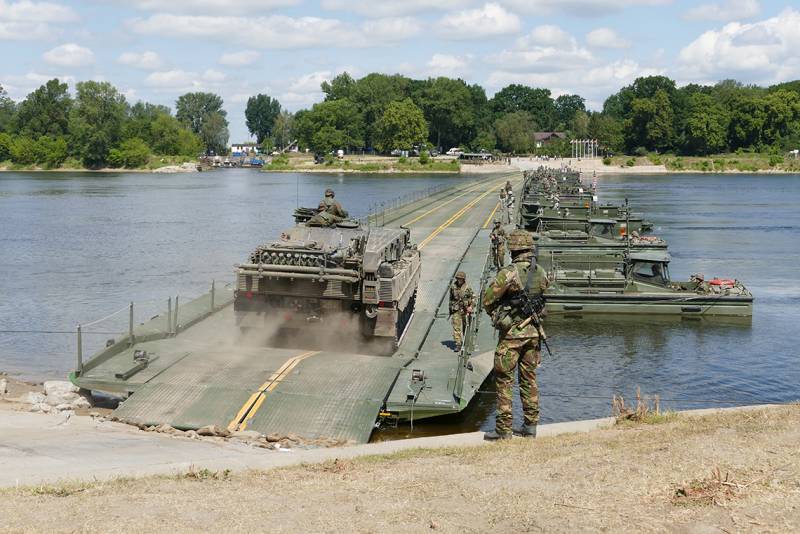
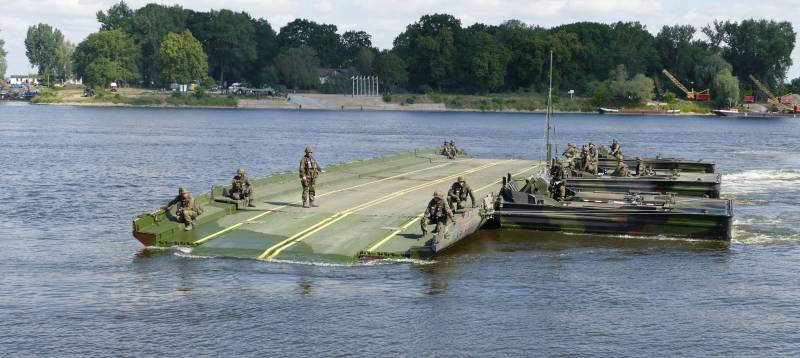
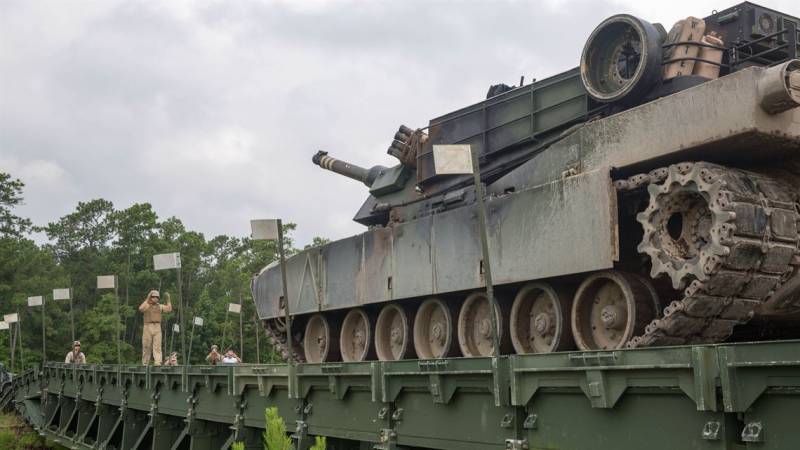
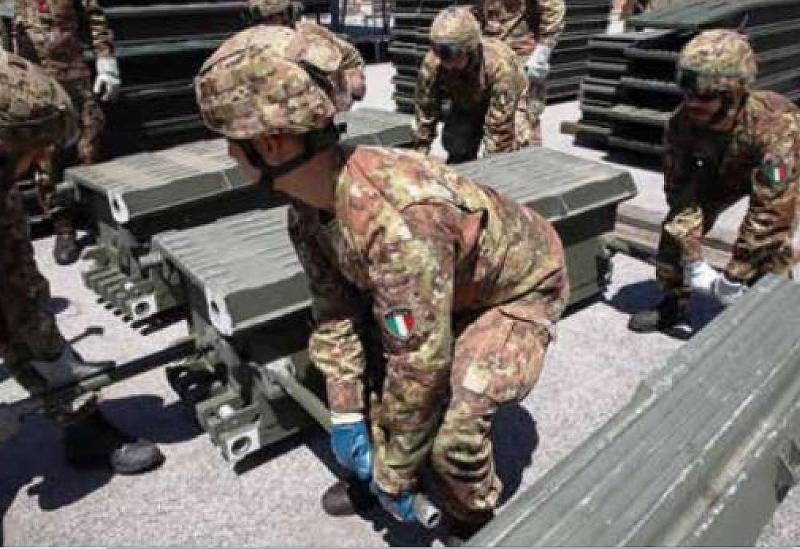
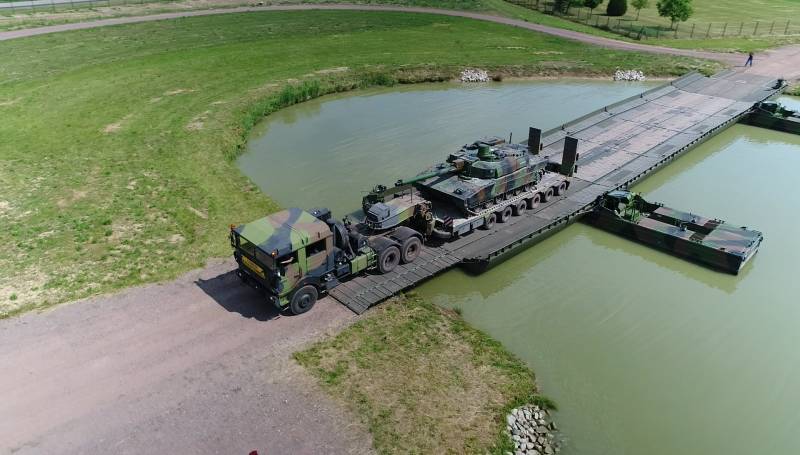
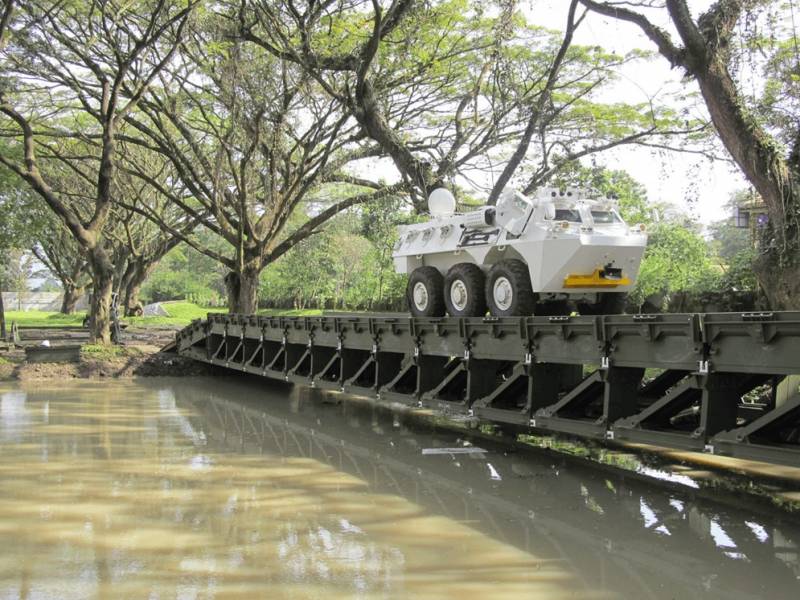
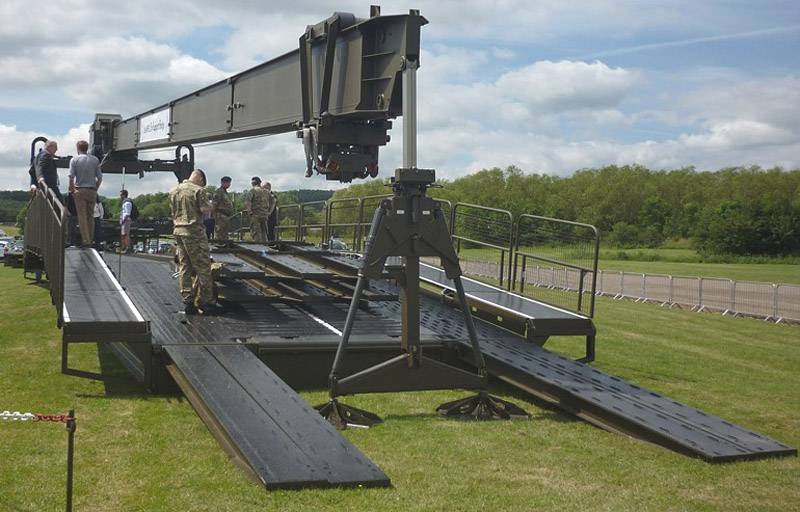
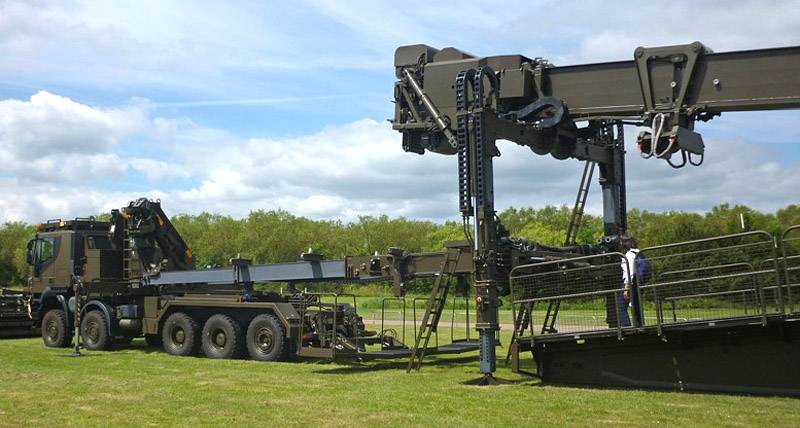
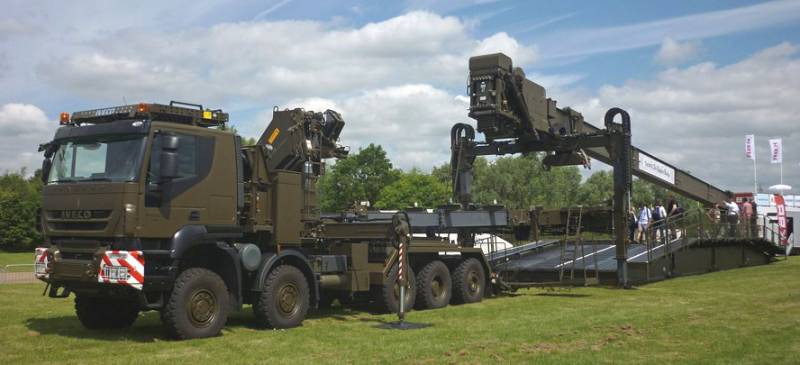
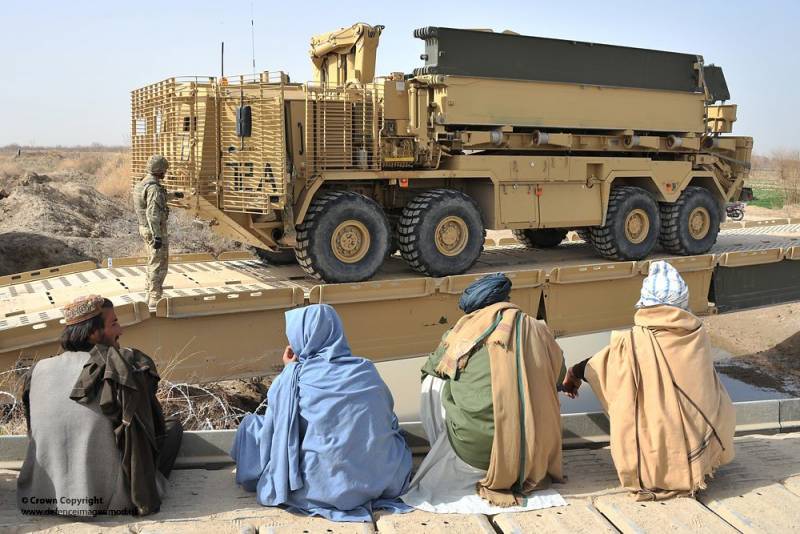
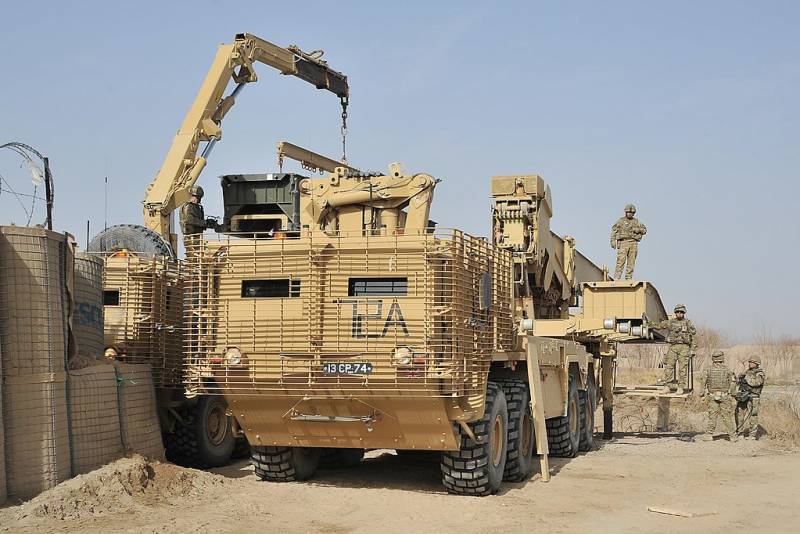
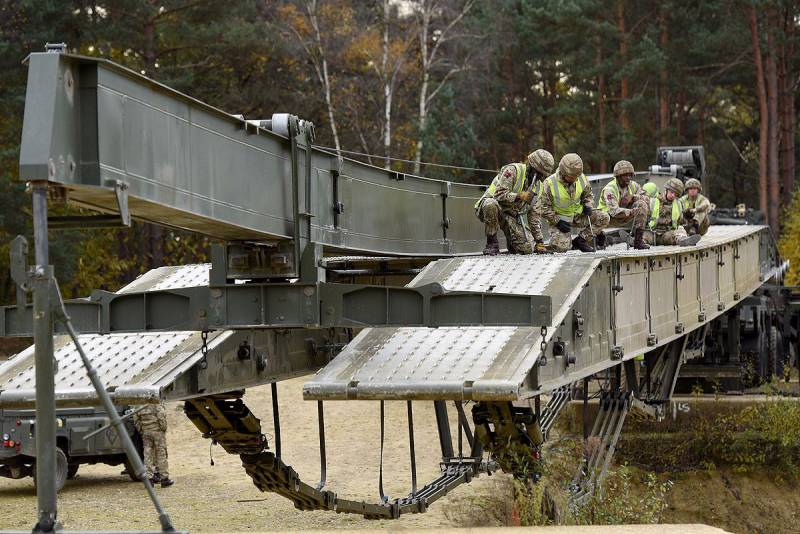
Information